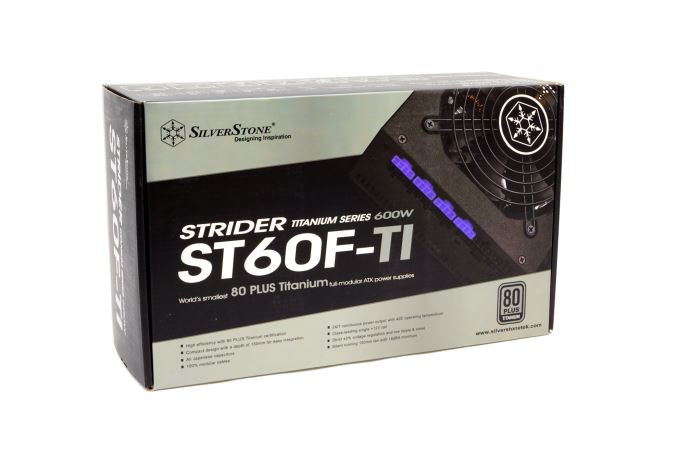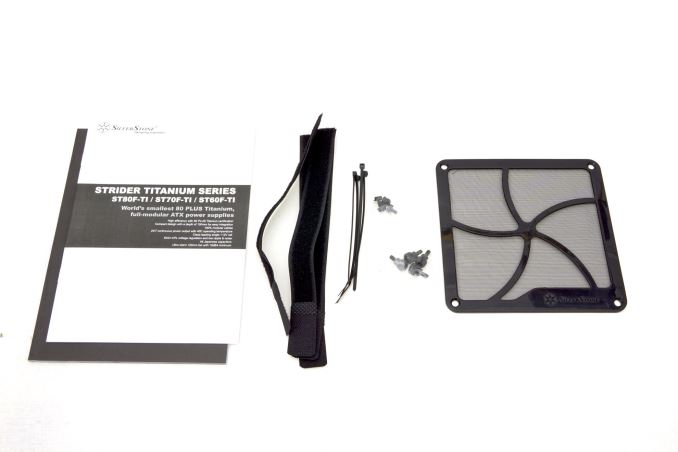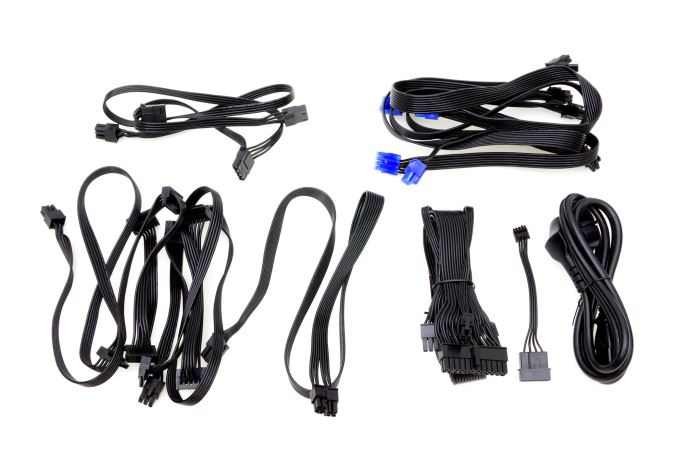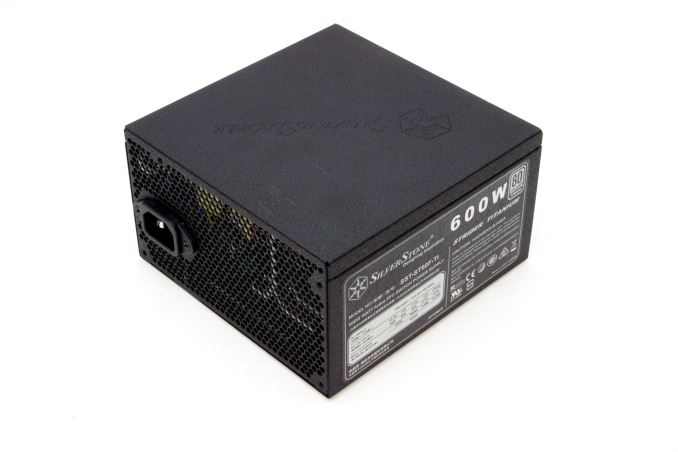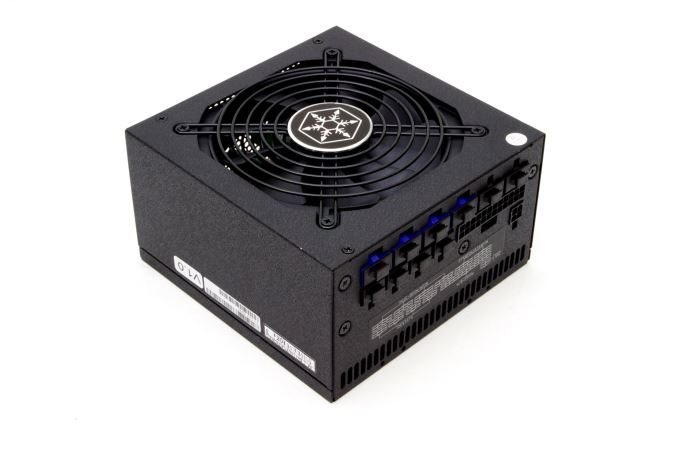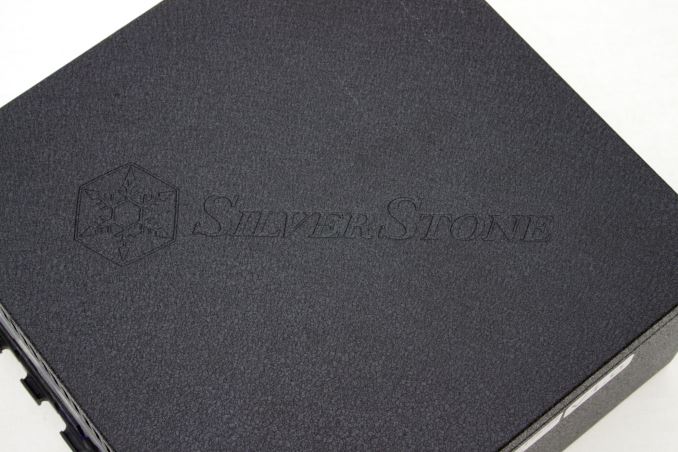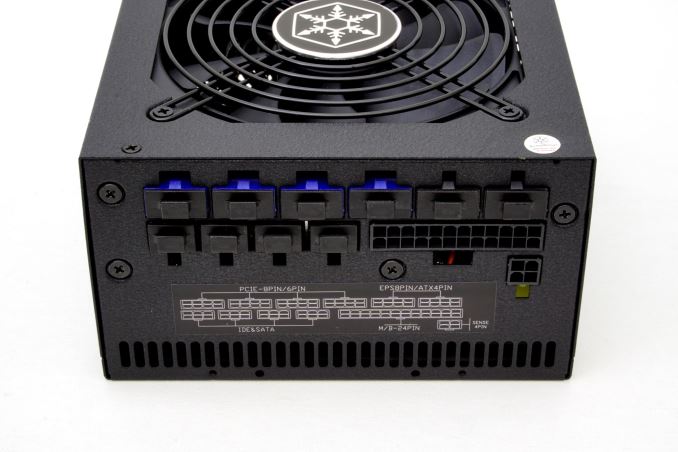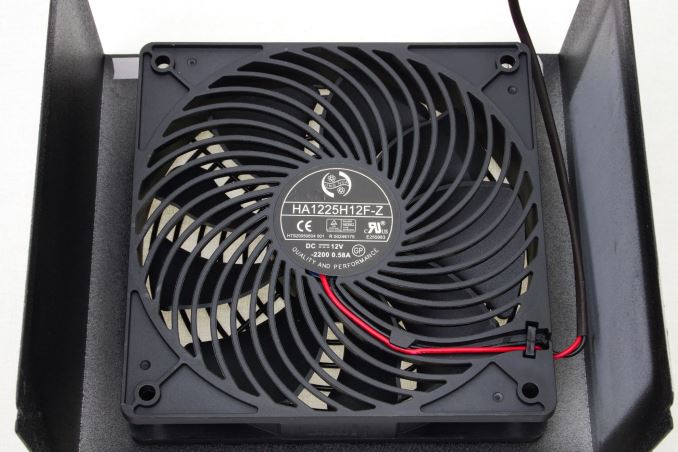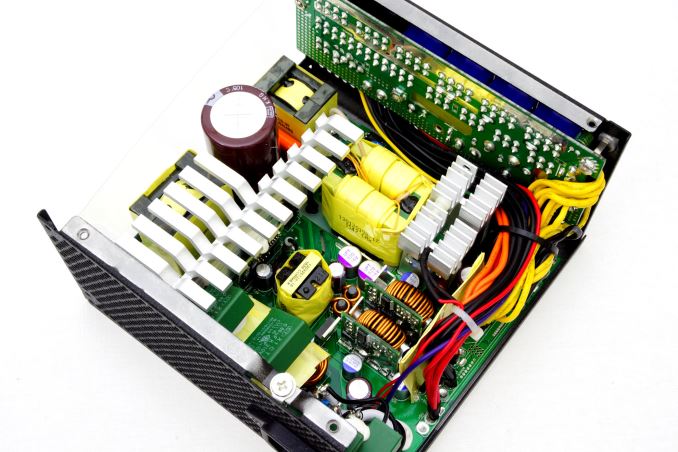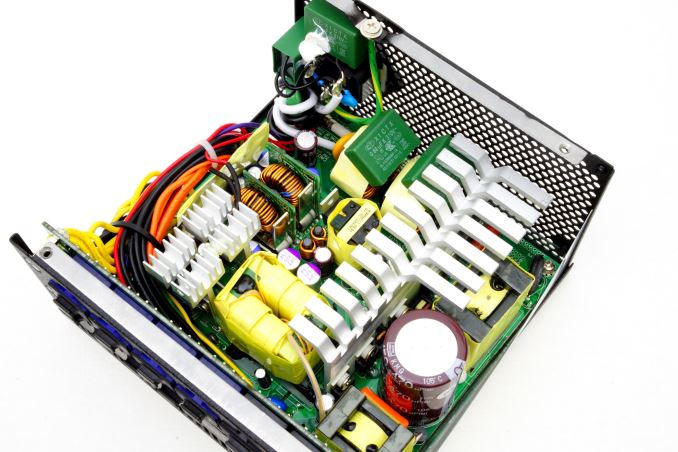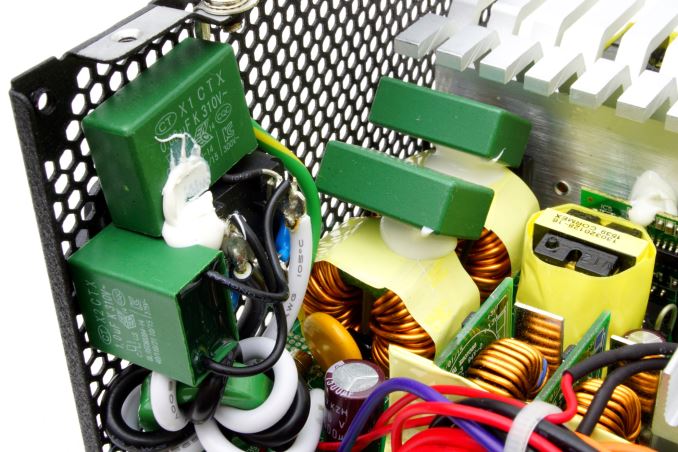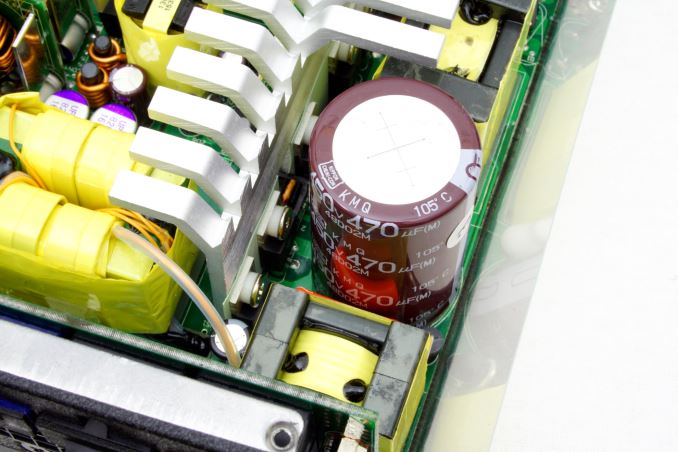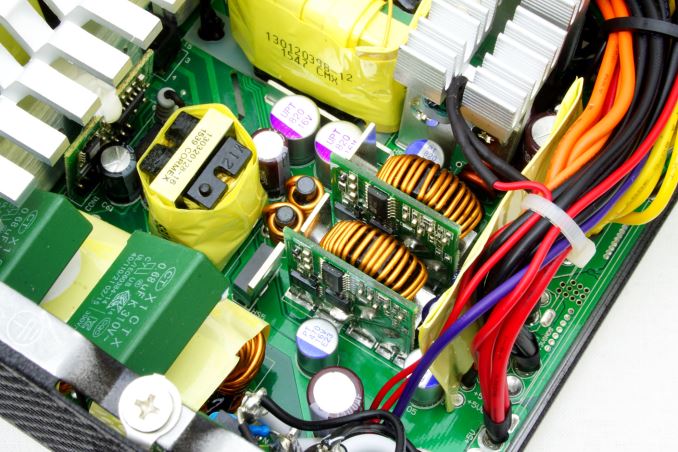
Original Link: https://www.anandtech.com/show/10513/the-silverstone-st60-fti-strider-titanium-600w-psu-review
The SilverStone ST60F-TI Strider Titanium 600W PSU Review
by E. Fylladitakis on July 29, 2016 8:00 AM EST- Posted in
- PSUs
- Cases/Cooling/PSUs
- SilverStone
- 600W
- 80Plus Titanium
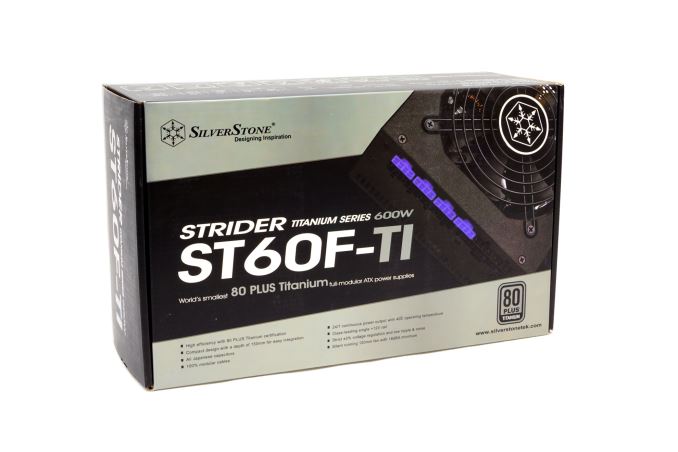
SilverStone is a reputable manufacturer of PC components, strongly focused on the development and marketing of small form factor and proprietary systems. A very large portion of the company’s computer case at retail consists of small form factor and proprietary designs, and cases that frequently can support ATX power supplies in these form factors. SilverStone also markets its PSUs, and is currently offering dozens of them via five different main series.
Introduction
One of SilverStone’s main PSU series is the Strider series, with the main notion of which is to offer high performance ATX PSUs of minimal proportions. Specifically, the company is trying to minimize the length of their units, as the other two dimensions need to remain the same in order to maintain ATX compliance. We recently had a look at the Strider ST55F-PT 550W PSU, an 80Plus Platinum certified PSU that SilverStone is using to specifically target gamers and advanced users building compact systems. 80Plus Platinum efficiency should nowadays be more than enough for even the most demanding of users, but there are those who are willing to pay extra just to get the pinnacle that the technology can currently offer. SilverStone is obviously aware of this, and has recently expanded the Strider Series by inserting 80Plus Titanium certified units into it. In this review we are having a look one of the three new units of that series, the Strider Titanium ST60F-TI 600W PSU.
| Power specifications ( Rated @ 40 °C ) | |||||
| AC INPUT | 100 - 240 VAC, 50 - 60 Hz | ||||
| RAIL | +3.3V | +5V | +12V | +5Vsb | -12V |
| MAX OUTPUT | 20A | 20A | 49A | 2.5A | 0.3A |
| 100W | 588W | 12.5W | 3.6W | ||
| TOTAL | 600W | ||||
Packaging and Bundle
We received the Strider Titanium PSU inside a large and very sturdy cardboard box. Inside the box, the PSU is protected by two thick polyethylene foam pieces and a nylon bag, as well as extra cardboard walls. This is about the maximum level of reasonable shipping protection that one could design. Aesthetically, the theme is simplistic and serious, focused mainly around the model number of the PSU itself. The main features of the PSU are printed on the front side of the box, while more specific details can be found on its sides and rear.
SilverStone supplies a fairly rich bundle alongside with the new Strider Titanium series units. Inside the box we found a standard AC power cable, four black mounting screws and four black thumbscrews, a few cable ties, four long cable straps, a magnetic filter for its fan (or another 120 mm fan), and a well written manual.
The modular cables of the Strider Titanium are "flat" type, ribbon cables, including the main 24-pin ATX cable. All of the wires and connectors are black, with the sole exception being the PSU side connectors of the PCI Express cables, which are blue.
| SilverStone Strider ST60F-TI | ||
| Connector type | Hardwired | Modular |
| ATX 24 Pin | - | 1 |
| EPS 4+4 Pin | - | 1 |
| EPS 8 Pin | - | - |
| PCI-E 6+2 Pin | - | 2 |
| PCI-E 8 Pin | - | 2 |
| SATA | - | 8 |
| Molex | - | 3 |
| Floppy | - | 1 |
External Appearance
SilverStone designed the ST60F-TI to be elegant and subtly stand out from a regular PSU lineup. That is the main design approach that the company takes for most of their products at this point of time. The chassis of the power supply is sprayed with a textured, grainy black paint that feels slightly rough to the touch and is highly resistant to fingermarks. This kind of paint however creates very high friction and is rather easy to scratch if the PSU body has to slide on metallic surfaces/supports. The body is 150 mm long, which actually is not abnormally short for 600 Watt units, but it did allow SilverStone to go with a 120 mm fan. The snowflake logo of the company can be seen in the form of a metallic badge over the fan’s engine.
SilverStone placed the sticker with the electrical specifications and certifications of the PSU on the left side of the chassis, making it visible from a windowed side panel if the PSU is installed with its fan facing downwards. The right side of the unit is entirely plain. They also engraved their company logo on the top side, but the engraving is very subtle and most likely will not be easily visible inside a case, even if there is strong illumination. If SilverStone wanted it to stand out, it should be recessed but with a white lettering design.
Only an AC cable receptacle can be seen at the rear side of the Strider Titanium, giving us a hint as to who the OEM behind it is. Numerous connectors for the modular cables can be found at the front side of the PSU. With the exception of the 24-pin ATX cable connectors, the rest have simple plastic caps attached. The blue connectors are for PCI Express cables and SilverStone is using them to differentiate from the similar CPU EPS connectors, which are black. The connectors are keyed, meaning that by default a user cannot really push a PCI Express cable into the EPS connector and vice versa. Finally, there are two connectors for the 24-pin cable because of the voltage sense connector found on the 24-pin ATX cable, which is supposed to improve the power quality of the PSU.
Internal Design
Hong Hua supplies the 120 mm fan for the cooling needs of the PSU. The 120 mm fan is a high quality model with an FDB (fluid dynamic bearing) engine and with a maximum speed of 2200 RPM. It has a wide operating range and, considering the very high efficiency of the PSU, it should remain inaudible most of the time.
SilverStone entrusted Enhance for the creation of their new Strider Titanium PSUs. Enhance is using an upgraded version of their Platinum-approved designs that is relatively simple. Basically, the designer just went with higher quality components and removed secondary parts that would reduce the PSU’s efficiency, such as, for example, the switch. The upside is that these heatsinks are greatly oversized for a PSU this efficient and ought to aid the thermal and acoustic performance of the design.
The input filtering stage consists of four Y capacitors, four X capacitors, two filtering inductors and one surge-suppressing MOV, ending to two input conversion bridges that can be seen sharing the same large heatsink with the active components of the PFC and primary inversion stages. The passive APFC components are a 450V/470μF capacitor supplied by Nippon Chemi-Con and a shielded inductor. The primary inversion stage is a half-bridge design and the main transformer has a single 12V output.
On the secondary, the DC to DC conversion circuits used to generate the minor voltage lines can be seen on their own vertical PCBs. Colored wires are being used to connect the main PCB with the connector’s PCB, which is a messy but effective solution. Nippon Chemi-Con and Rubycon supply the electrolytic capacitors on the main PCB and a few small Suncon products can be found on the connector’s PCB. Polymer capacitors are supplied by Unicon and Nippon Chemi-Con.
Cold Test Results
For the testing of PSUs, we are using high precision electronic loads with a maximum power draw of 2700 Watts, a Rigol DS5042M 40 MHz oscilloscope, an Extech 380803 power analyzer, two high precision UNI-T UT-325 digital thermometers, an Extech HD600 SPL meter, a self-designed hotbox and various other bits and parts. For a thorough explanation of our testing methodology and more details on our equipment, please refer to our How We Test PSUs - 2014 Pipeline post.
The conversion efficiency of the Strider Titanium 600W PSU at room temperature is very high, suitable for a Titanium rating at 115VAC, but it misses the 80Plus Titanium certification for an input voltage of 230VAC. For 80Plus Titanium units under 230VAC input, the directive dictates that the unit should have an efficiency of at least 96% under 50% load, a figure that cannot be reached with a slightly augmented 80Plus Platinum platform. The average efficiency is 92.9% within the nominal load range (20% to 100% of the unit's capacity) and reaches up to 94.8% at 50% load. The efficiency at just 5% load remains above 80%.
Enhance’s platform does not have a “semi-fanless” control method, meaning that the fan starts as soon as the PSU is turned on. The speed of the fan increases almost linearly alongside with the load. In room temperature however, it barely becomes audible for loads above 450-500 Watts, reaching a maximum of 38.6 dB(A) at full capacity. The temperature readings are also in line with the high efficiency of the PSU, barely surpassing 50 °C under maximum load.
Hot Test Results
As it can be seen in the below tables, the SilverStone Strider Titanium offers stunningly low power quality for a PSU of this class. The voltage regulation is great, with an excellent regulation of just 1.1% for the 12V line and very good 2.4%/2.8% for the 3.3V/5V lines respectively. However, the filtering is shockingly lacking, with our instruments recording a maximum voltage ripple of 106 mV on the 12V line, flirting with the 120 mV design limit. The maximum voltage ripple on the 3.3V and 5V lines is 34 mV and 40 mV respectively, for a design limit of 50 mV.
| Main Output | ||||||||
| Load (Watts) | 120.98 W | 302.05 W | 449.09 W | 596.96 W | ||||
| Load (Percent) | 20.16% | 50.34% | 74.85% | 99.49% | ||||
| Amperes | Volts | Amperes | Volts | Amperes | Volts | Amperes | Volts | |
| 3.3 V | 1.79 | 3.35 | 4.47 | 3.35 | 6.71 | 3.3 | 8.94 | 3.27 |
| 5 V | 1.79 | 5.07 | 4.47 | 5.06 | 6.71 | 4.96 | 8.94 | 4.93 |
| 12 V | 8.76 | 12.09 | 21.91 | 12.07 | 32.86 | 11.98 | 43.82 | 11.95 |
| Line | Regulation (20% to 100% load) |
Voltage Ripple (mV) | |||||
| 20% Load | 50% Load | 75% Load | 100% Load | CL1 12V |
CL2 3.3V + 5V |
||
| 3.3V | 2.4% | 16 | 24 | 30 | 34 | 24 | 36 |
| 5V | 2.8% | 20 | 26 | 34 | 40 | 30 | 40 |
| 12V | 1.1% | 28 | 48 | 78 | 106 | 114 | 70 |
Even though this PSU is rated at 40 °C, we had no problem reaching its maximum power output with a significantly higher ambient temperature. The impact on the conversion efficiency was tiny, with average nominal load (20-100%) efficiency dropping by just 0.7%. The drop was balanced across the entire load range and only slightly greater at maximum load, indicating that the components are not being overly stressed. The maximum efficiency now is 93.3% at 50% load, dropping down to a minimum of 90.2% at maximum load.
The thermal design of the Strider Titanium relies on its high efficiency and abnormally large heatsinks but the high ambient temperature would inevitably force the fan to increase its speed. Nevertheless, the PSU is capable of maintaining comfortable noise levels up to 40-45% load even under such conditions. Beyond that point, the Hong Hua fan does become noisy but, considering the operating conditions, the sound pressure is at reasonable levels. The internal temperatures of the PSU are very reasonable, reaching up to a maximum of 84.5 °C under maximum load.
Conclusion
Most manufacturers consider the 80Plus Titanium certification to be a badge for their pinnacle models only and thus they are offering just one or a few very high output and severely expensive models. SilverStone clearly did not take this approach. Their Strider Titanium series consists of three PSUs with a maximum output between 600W and 800W, a reasonable power level for the bulk of gamers and PC enthusiasts. Their pricing is reasonable as well, starting at $140 for the 600W model and reaching up to $170 for the 800W model at the time of this review, an average of $30 higher than corresponding 80Plus Platinum certified units. The new Strider Titanium series appear a fine mix between top grade specifications and value. However, the ST60F-TI has left us with mixed feelings.
Although the conversion efficiency of the Strider Titanium ST60F-TI 600W is exceptional, it does not really meet the 80Plus Titanium requirements with a 230VAC input. The directive dictates that, among other things, a PSU needs to reach 96% efficiency at 50% capacity in order to earn an 80Plus Titanium certification under 230VAC input. This may not be impossible but it is far too costly at this point of time and cannot be achieved by platforms such as this, which was originally designed for lower efficiency levels. As such, most OEMs and manufacturers take their certification under a 115VAC input, which is significantly less demanding. Ultimately, the ST60F-TI is more efficient than equivalent 80Plus Platinum certified units even though it cannot reach the directive’s efficiency requirements with an 230VAC input.
What took the hit for reaching this high efficiency on a platform that was not really originally designed for it however is the power quality. The ST60F-TI offers very good voltage regulation but the filtering is inexcusable for a PSU of this class. This could be easily resolved with the use of capacitors, yet such extra components induce extra losses and lower the overall efficiency of the device. It is likely that Enhance used the absolute minimum possible in order to pass the 80Plus Titanium certification testing.
On the other hand, the ST60F-TI is a compact, aesthetically pleasing, high quality PSU that is covered by a five year manufacturer’s warranty. Modders that build both compact and typical systems will love its small proportions and elegant design, as well as its low noise output and great thermal performance. Overclockers probably scratched it off their list already because of the very high ripple but the ST60F-TI does deliver power quality within the ATX design guide’s specifications and should serve most typical users reliably, as long as no overclocking or use of very poor quality components is involved.

